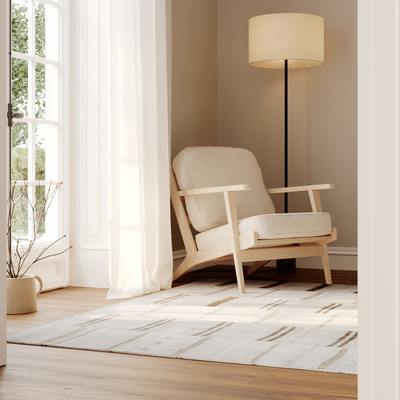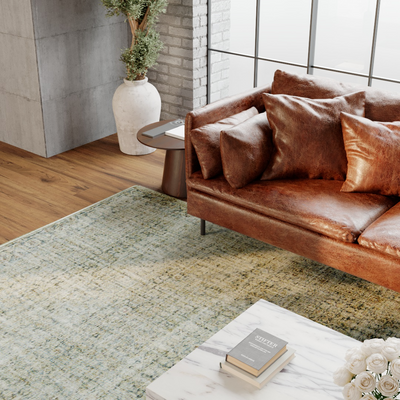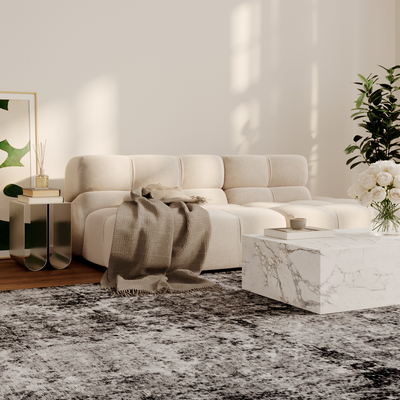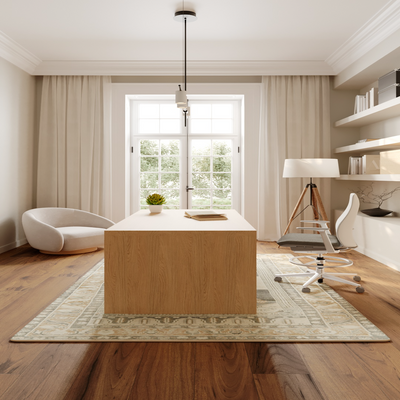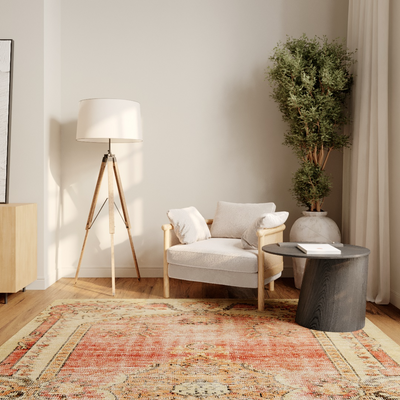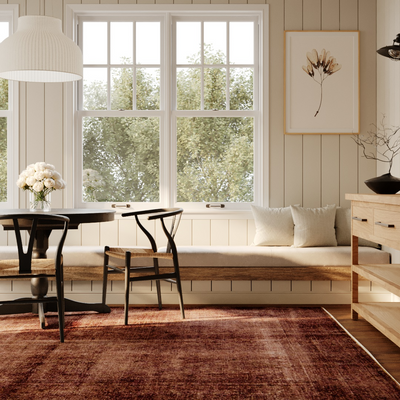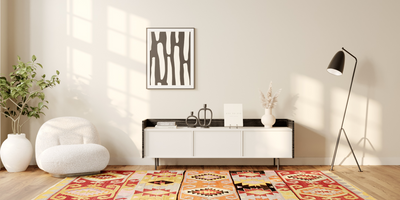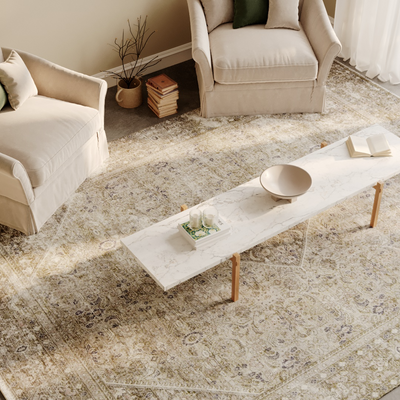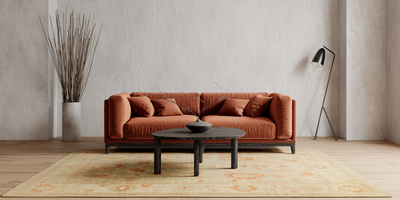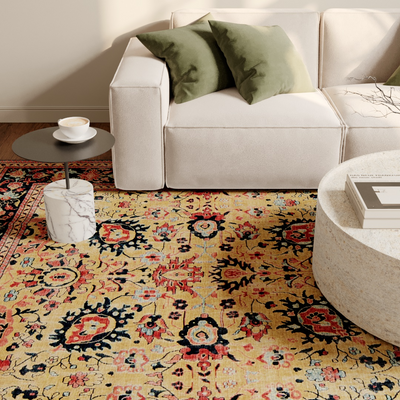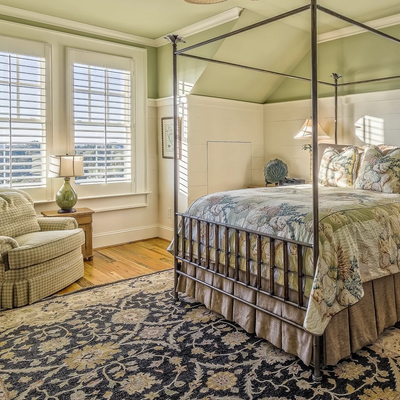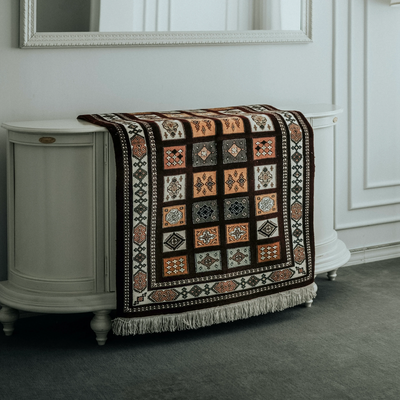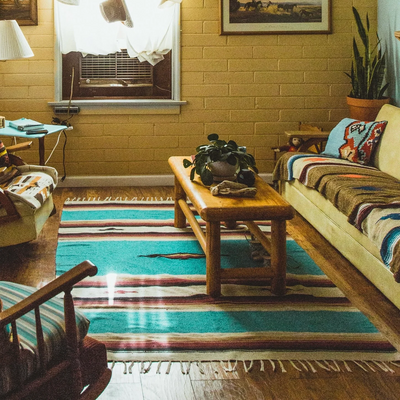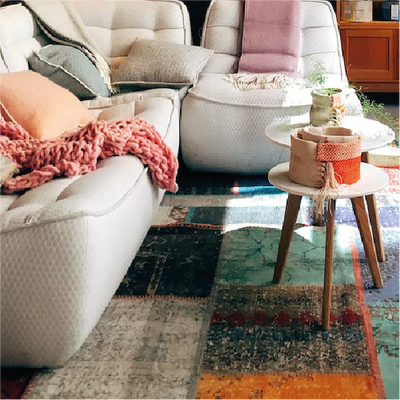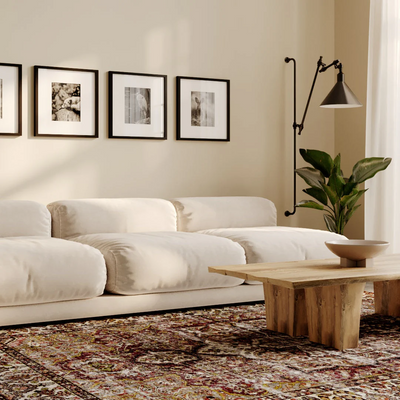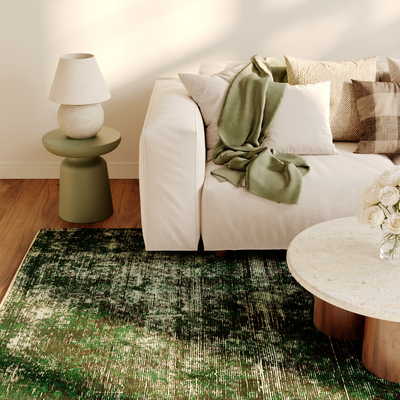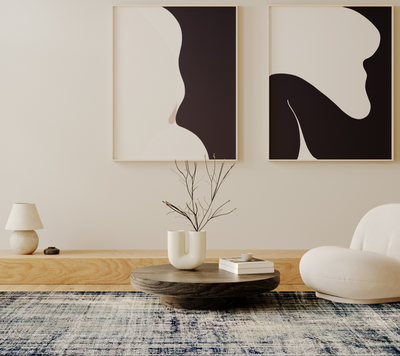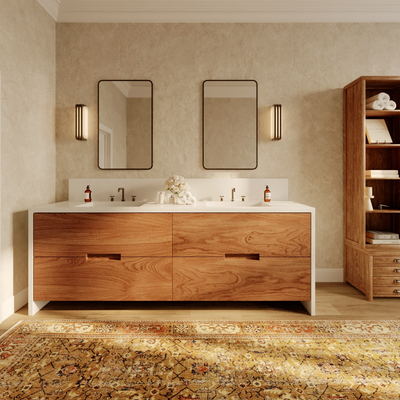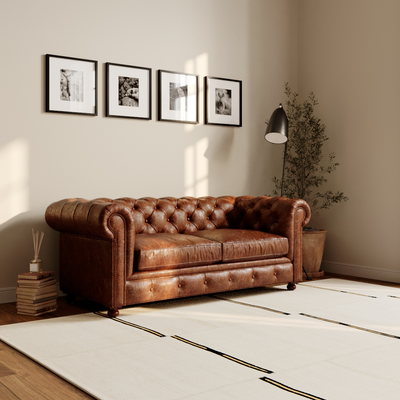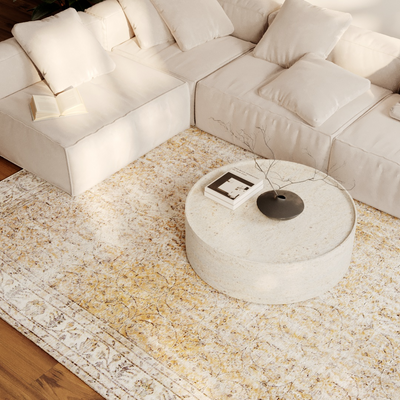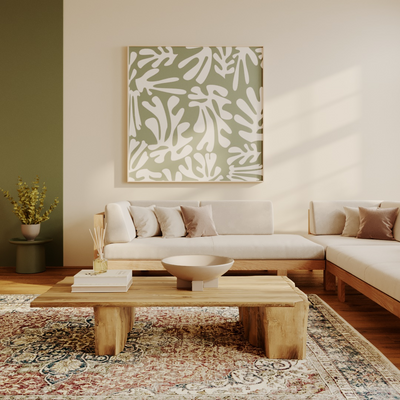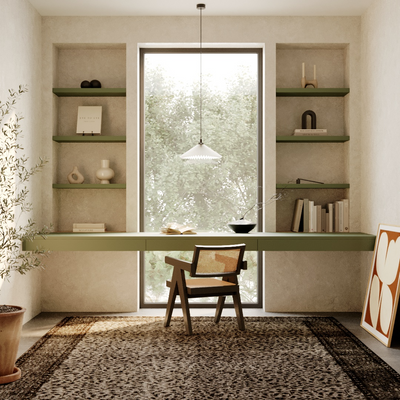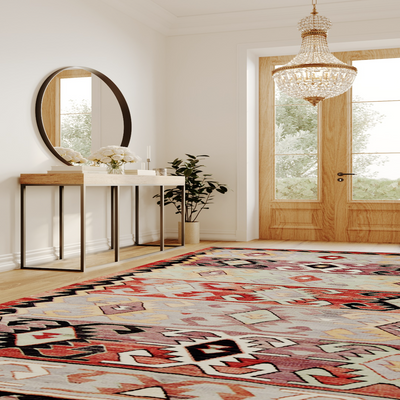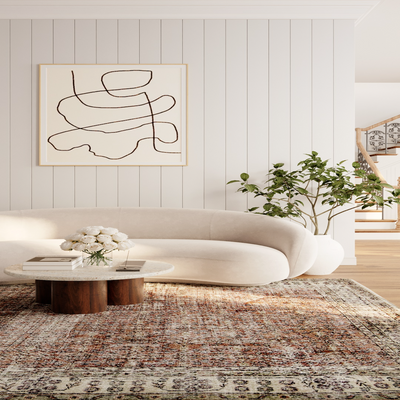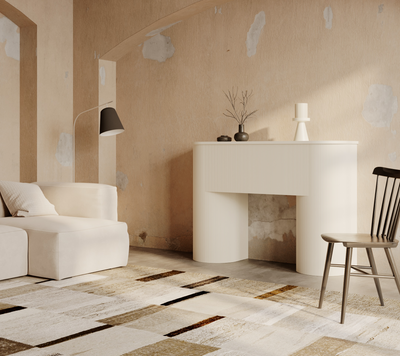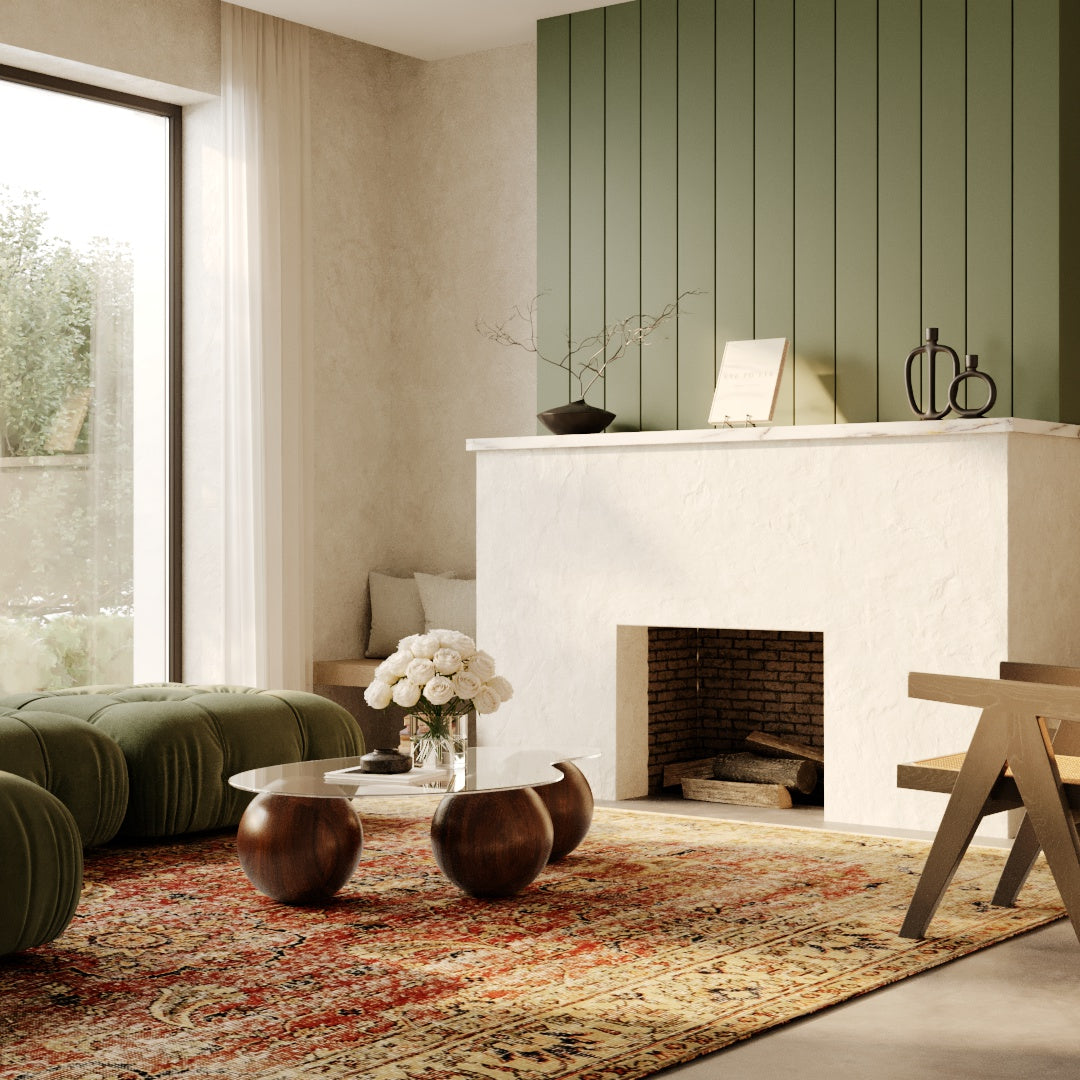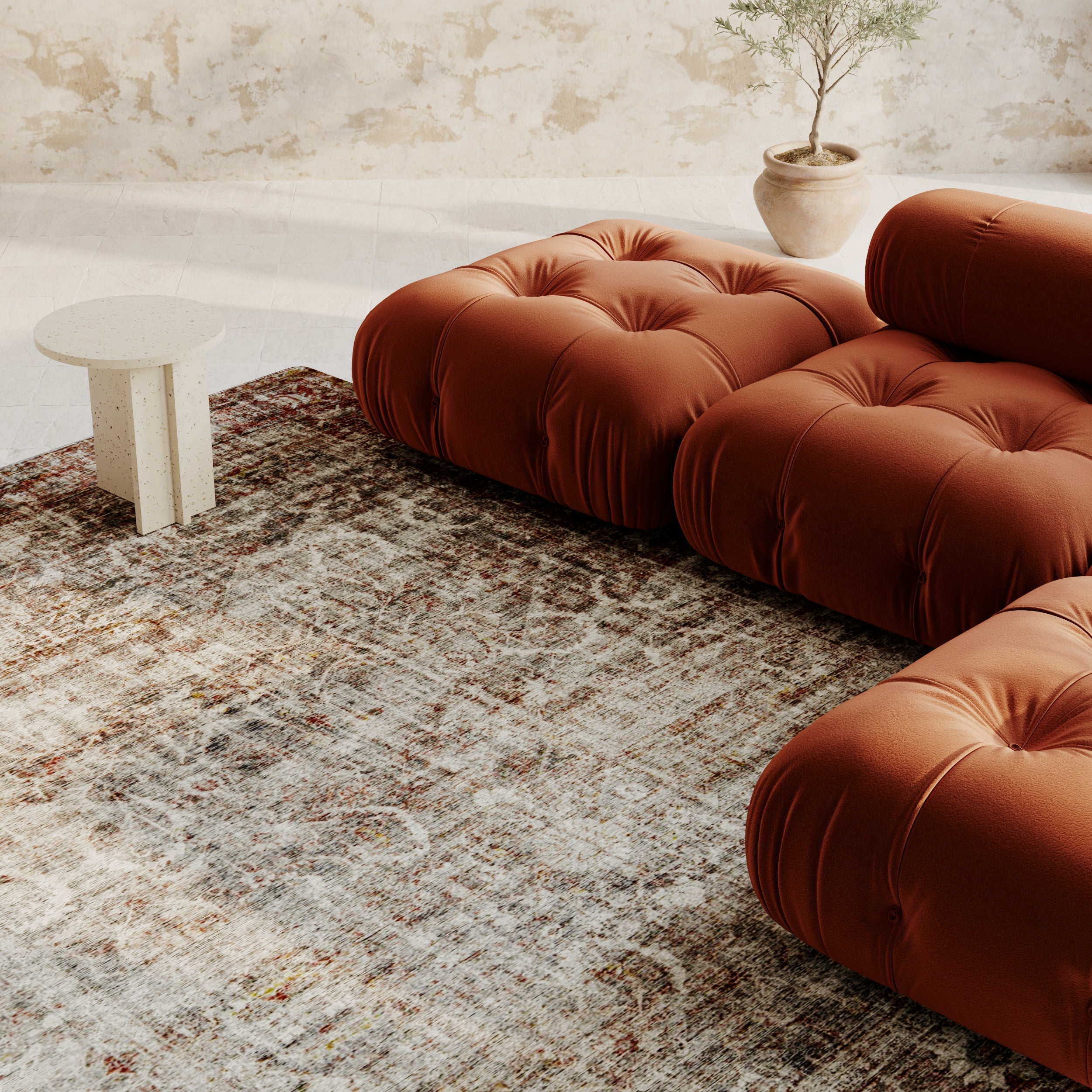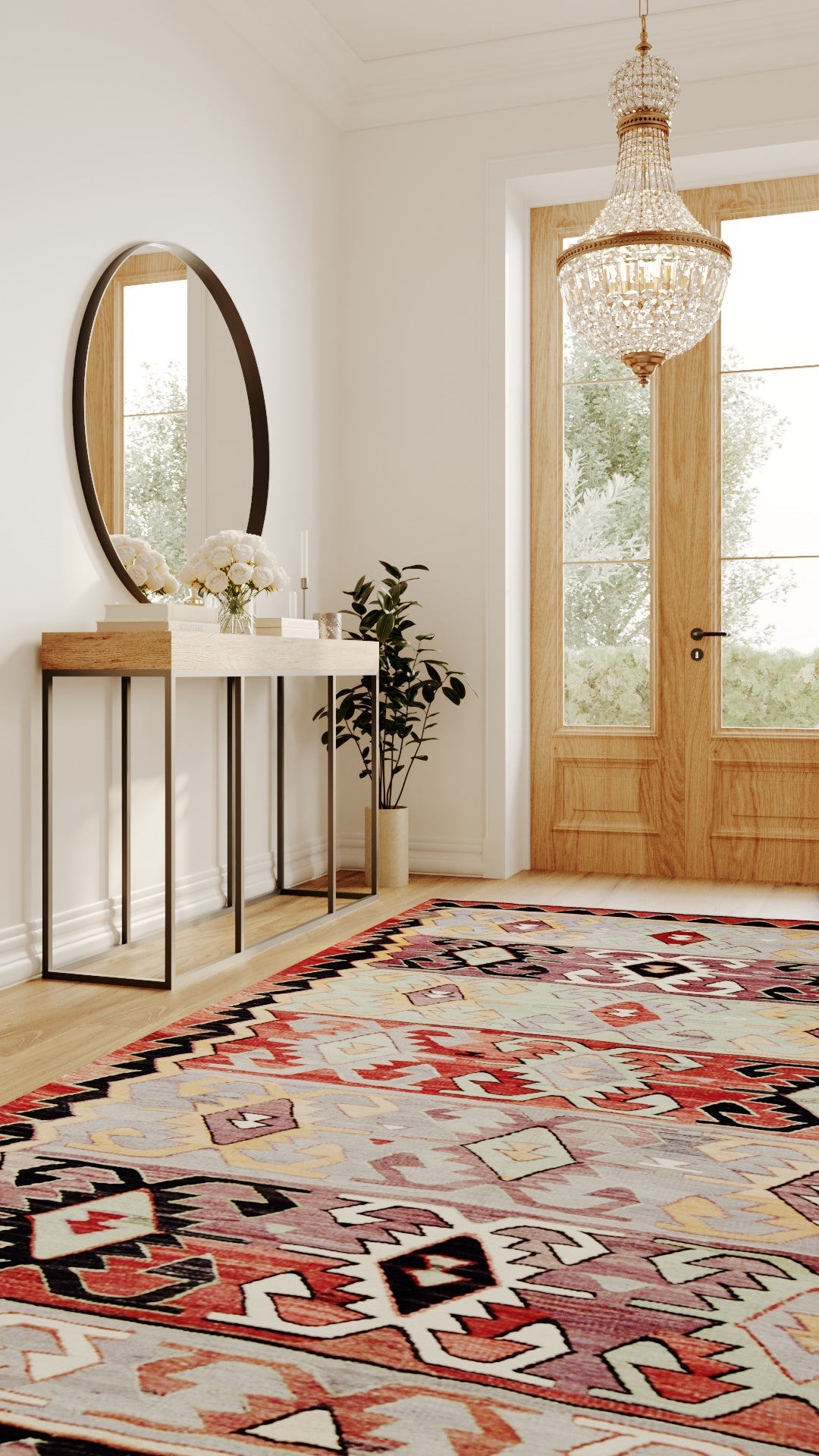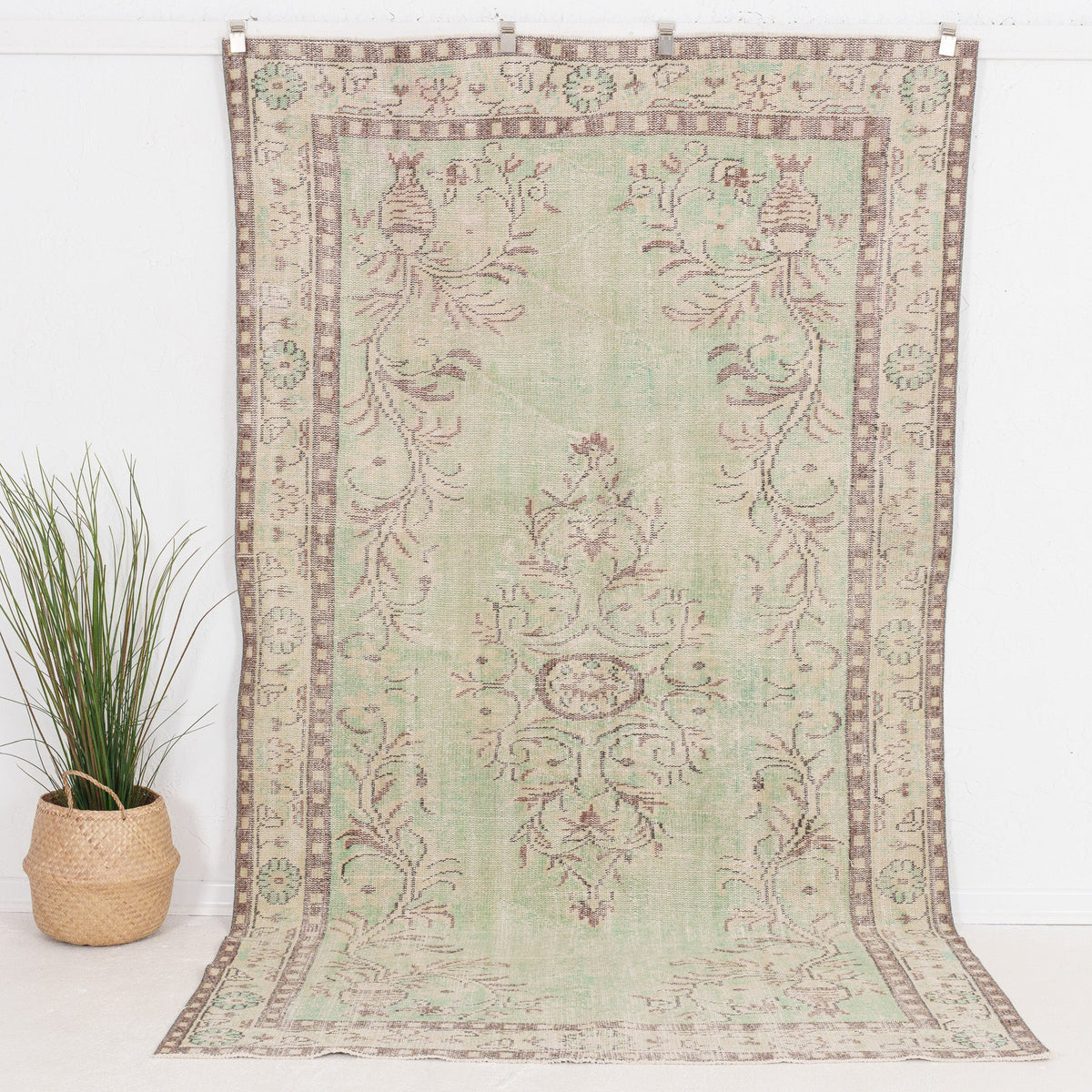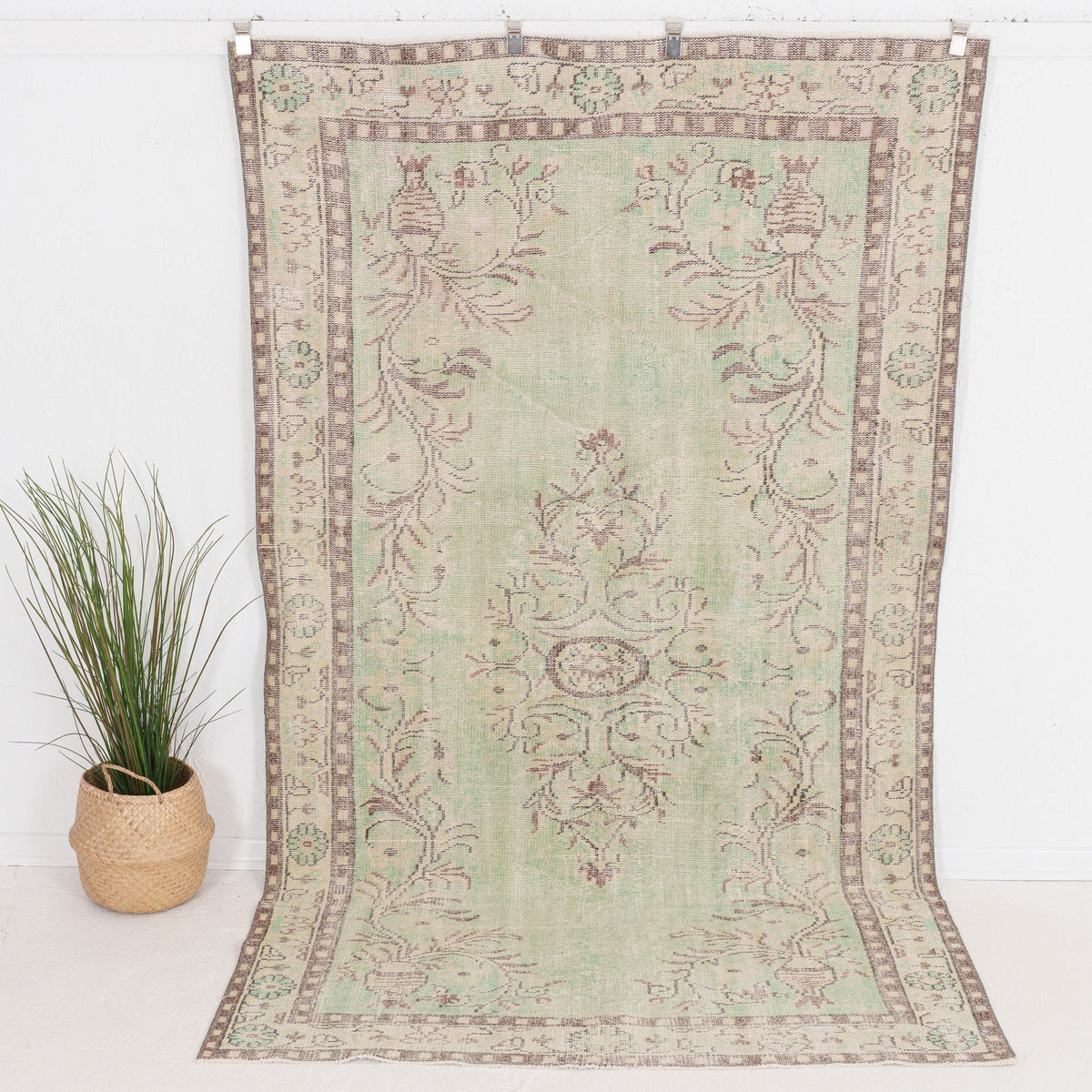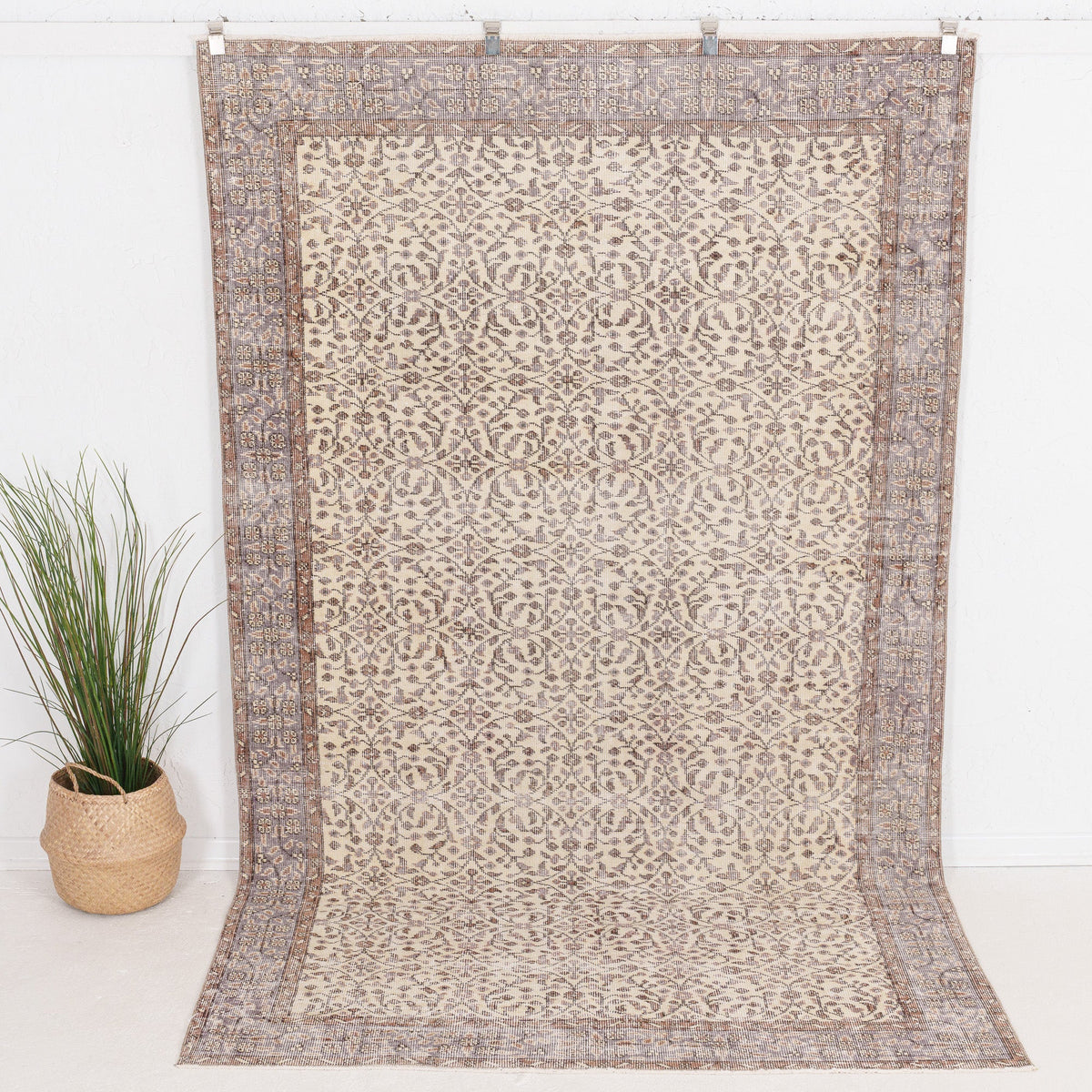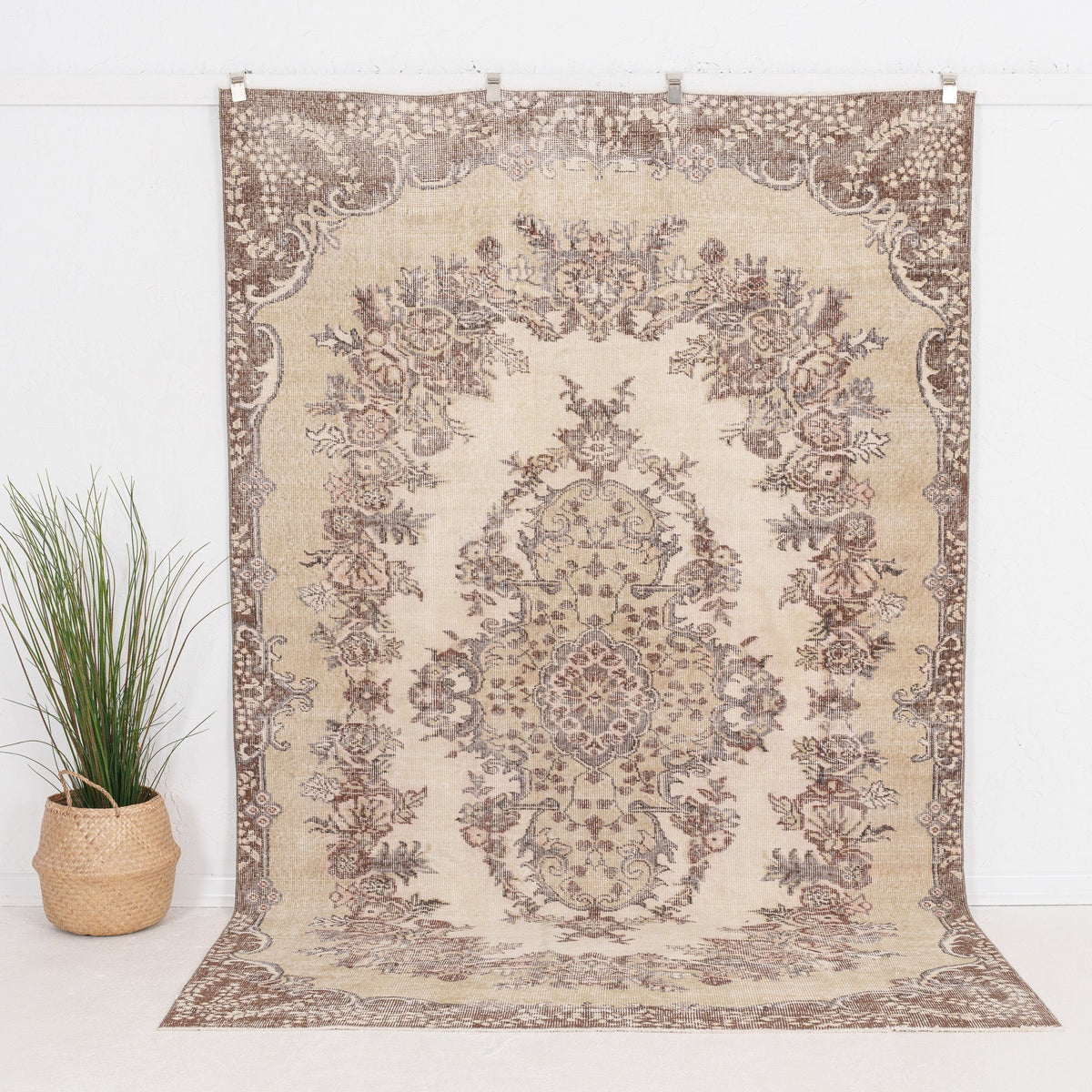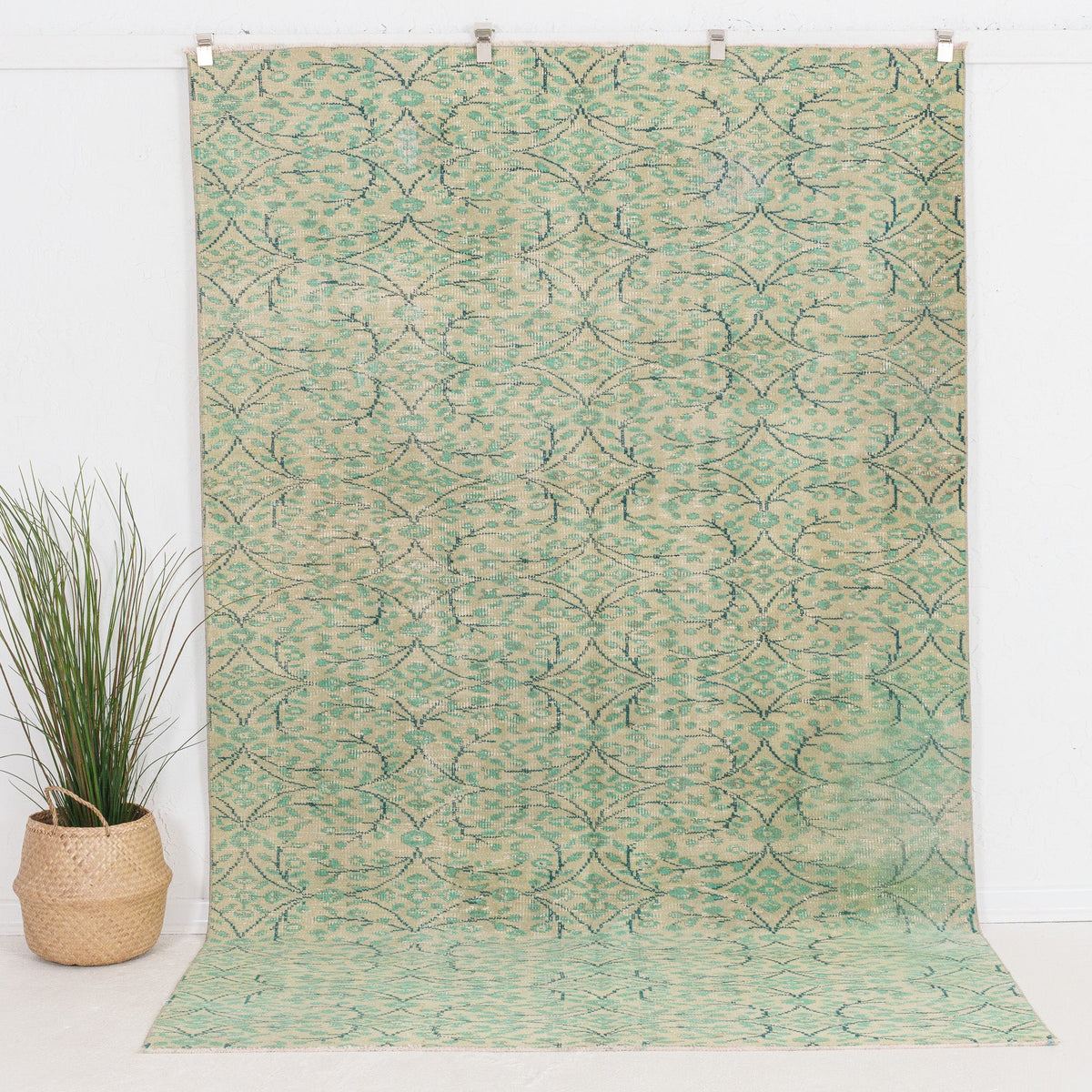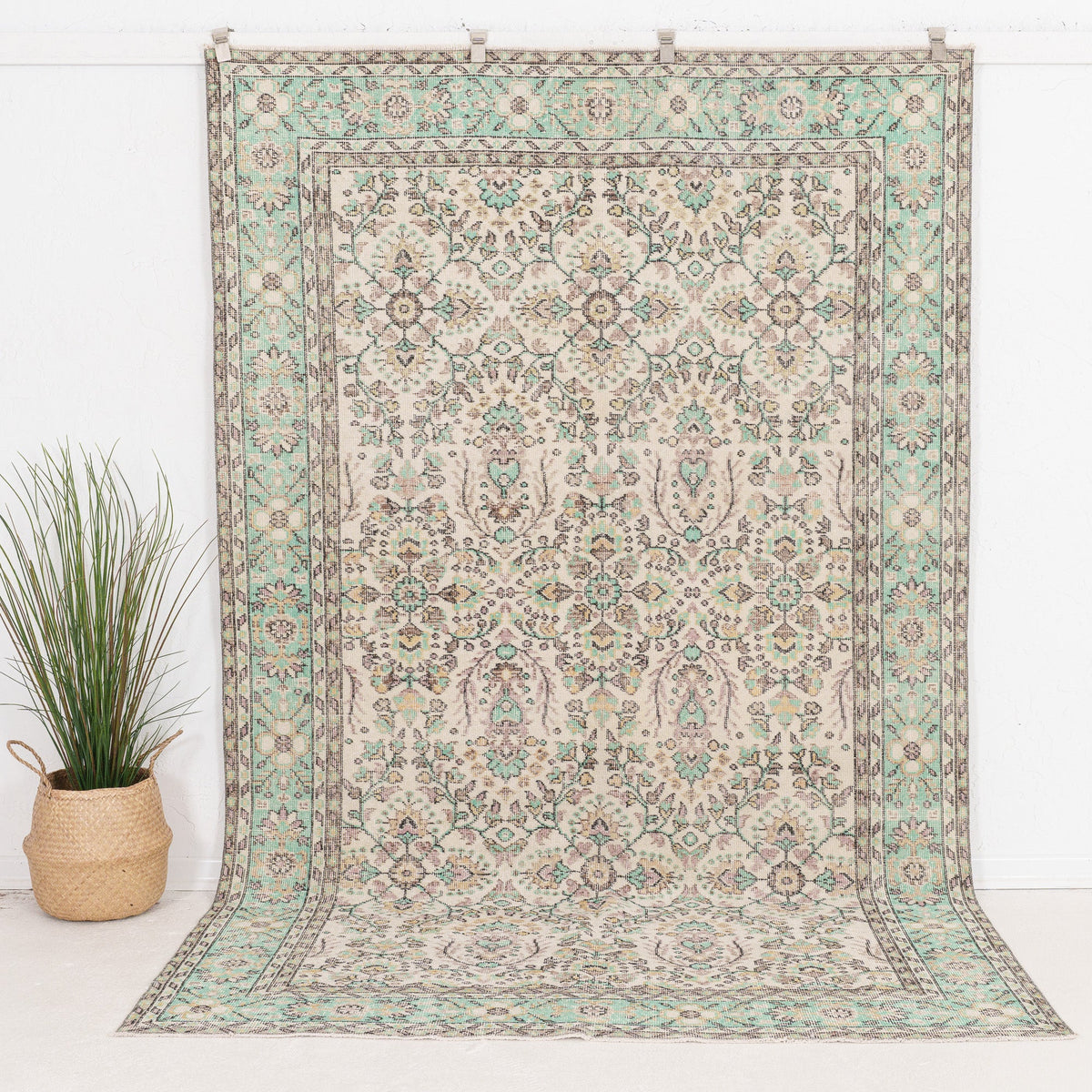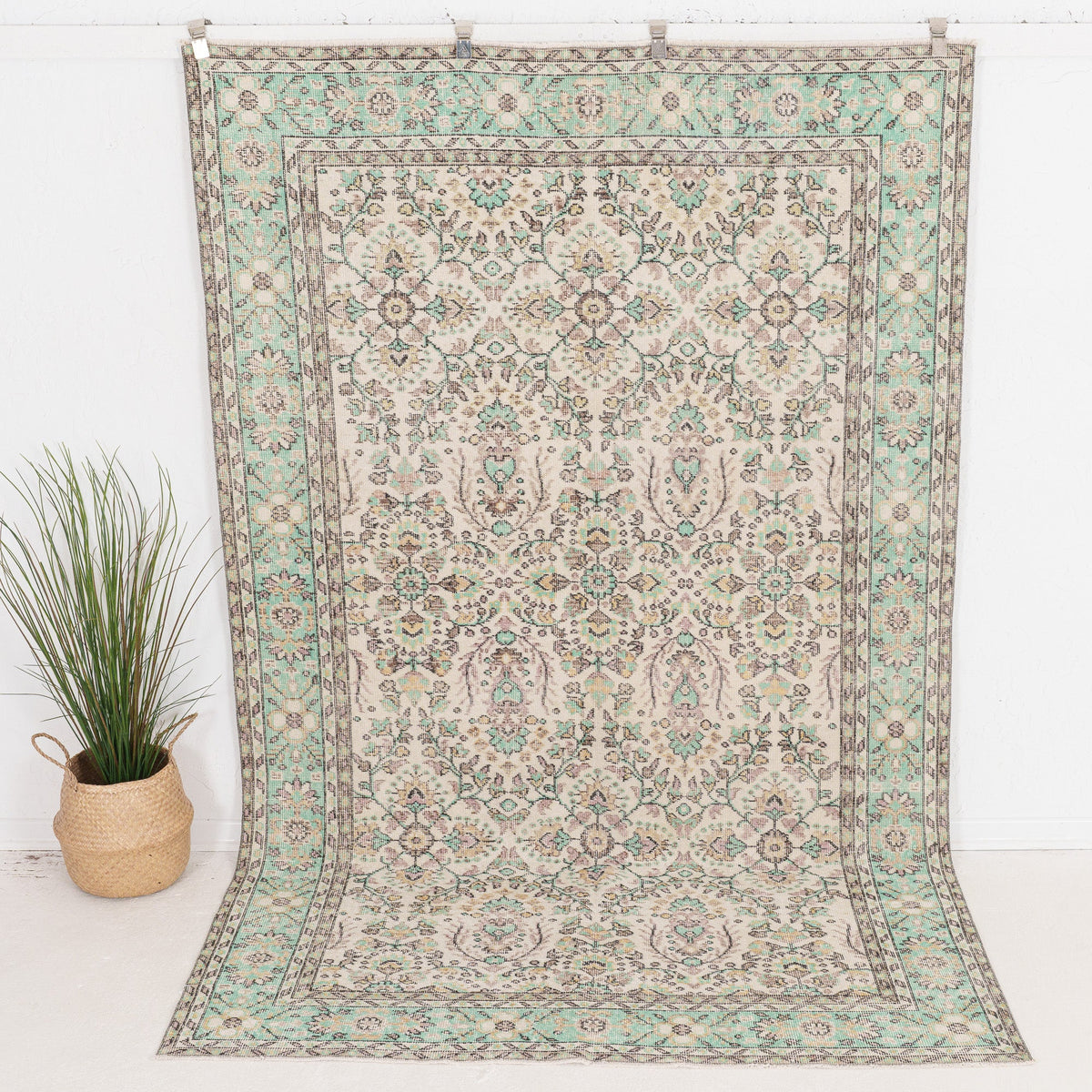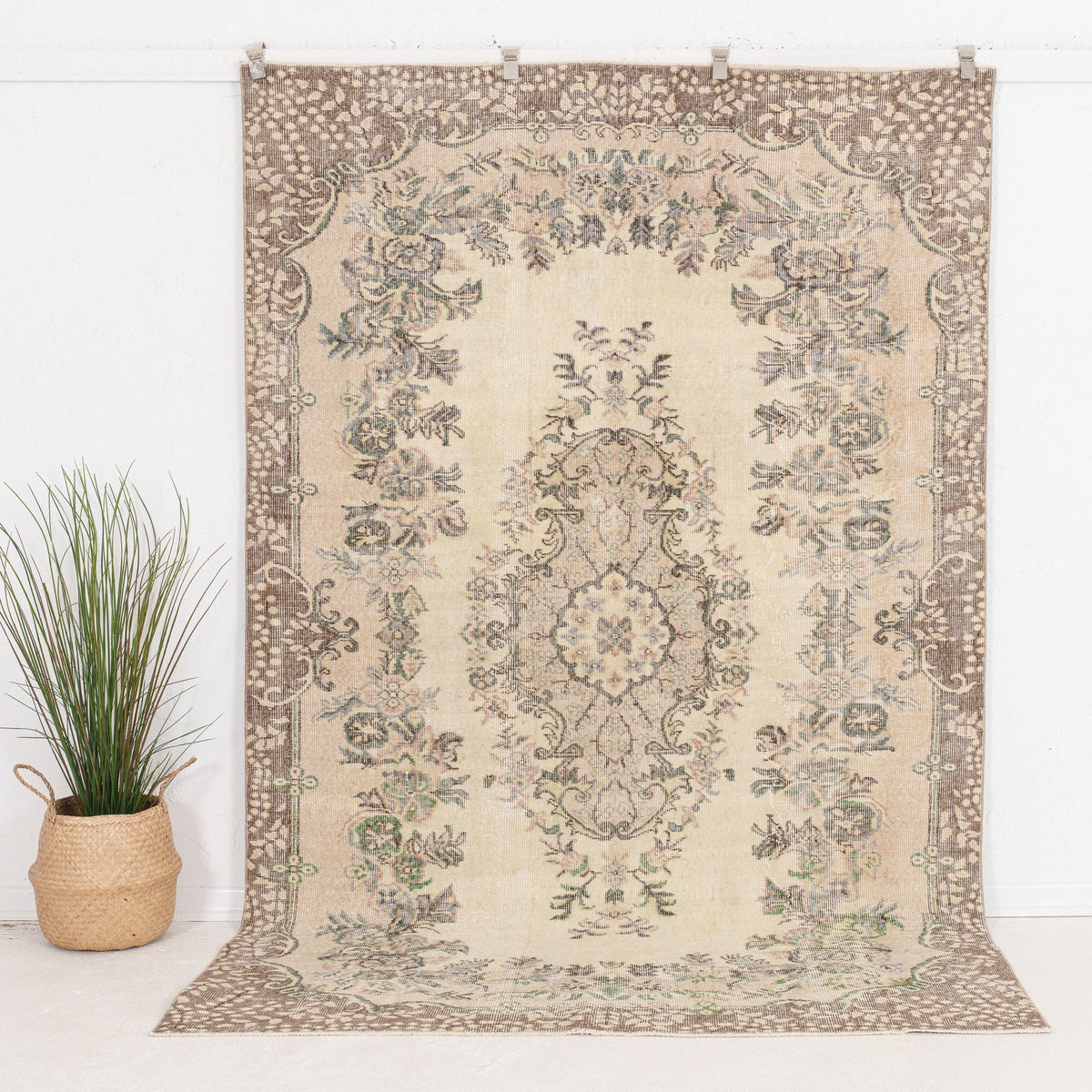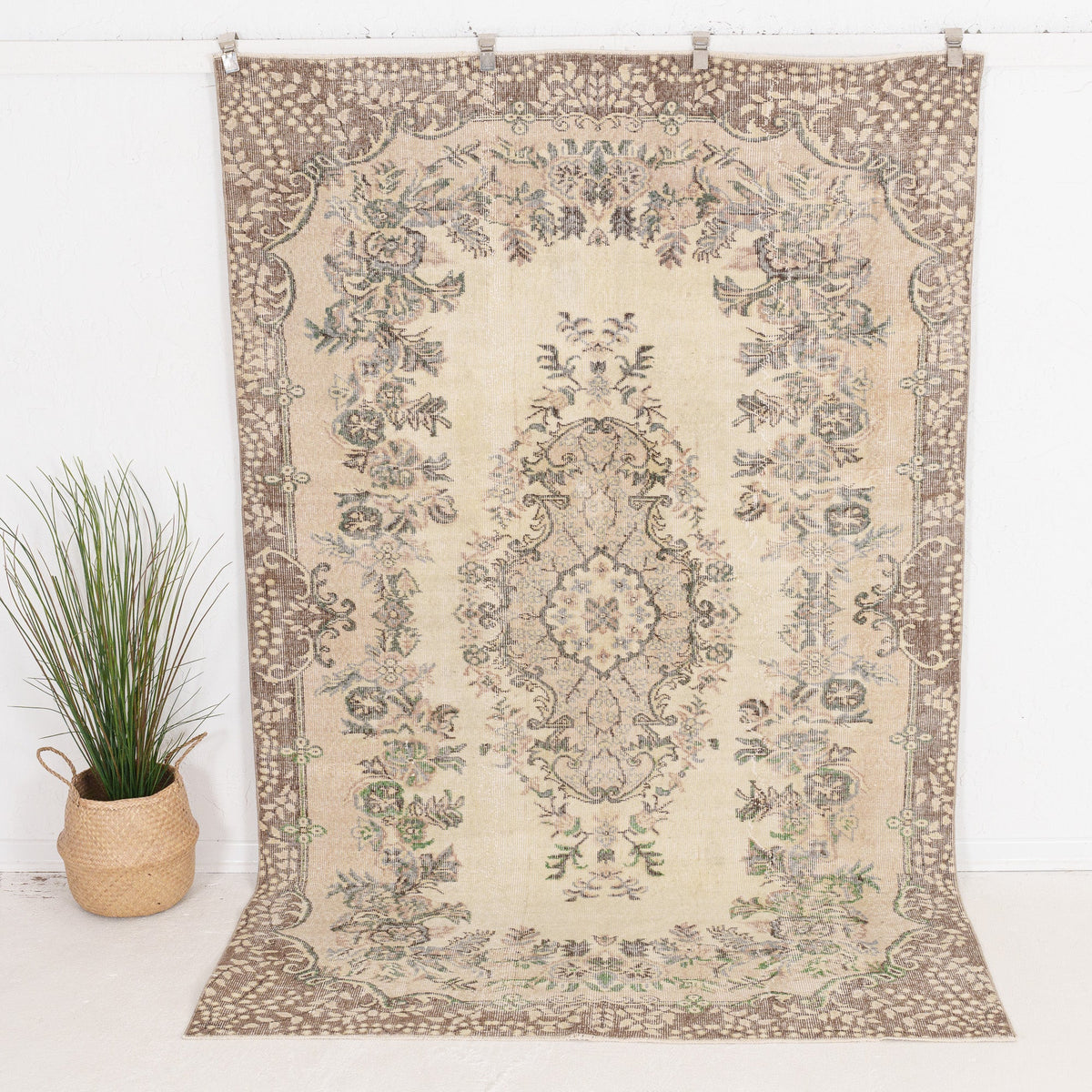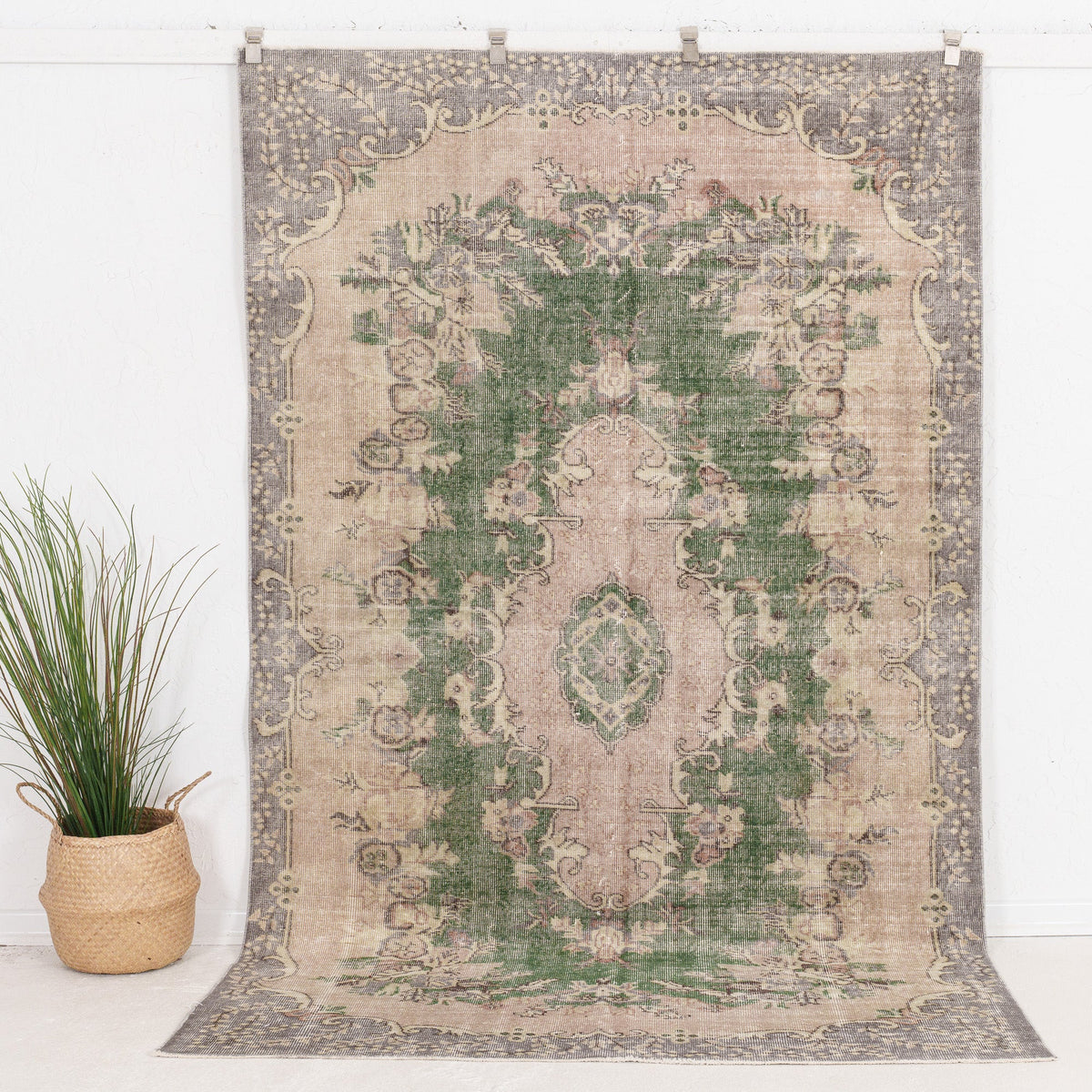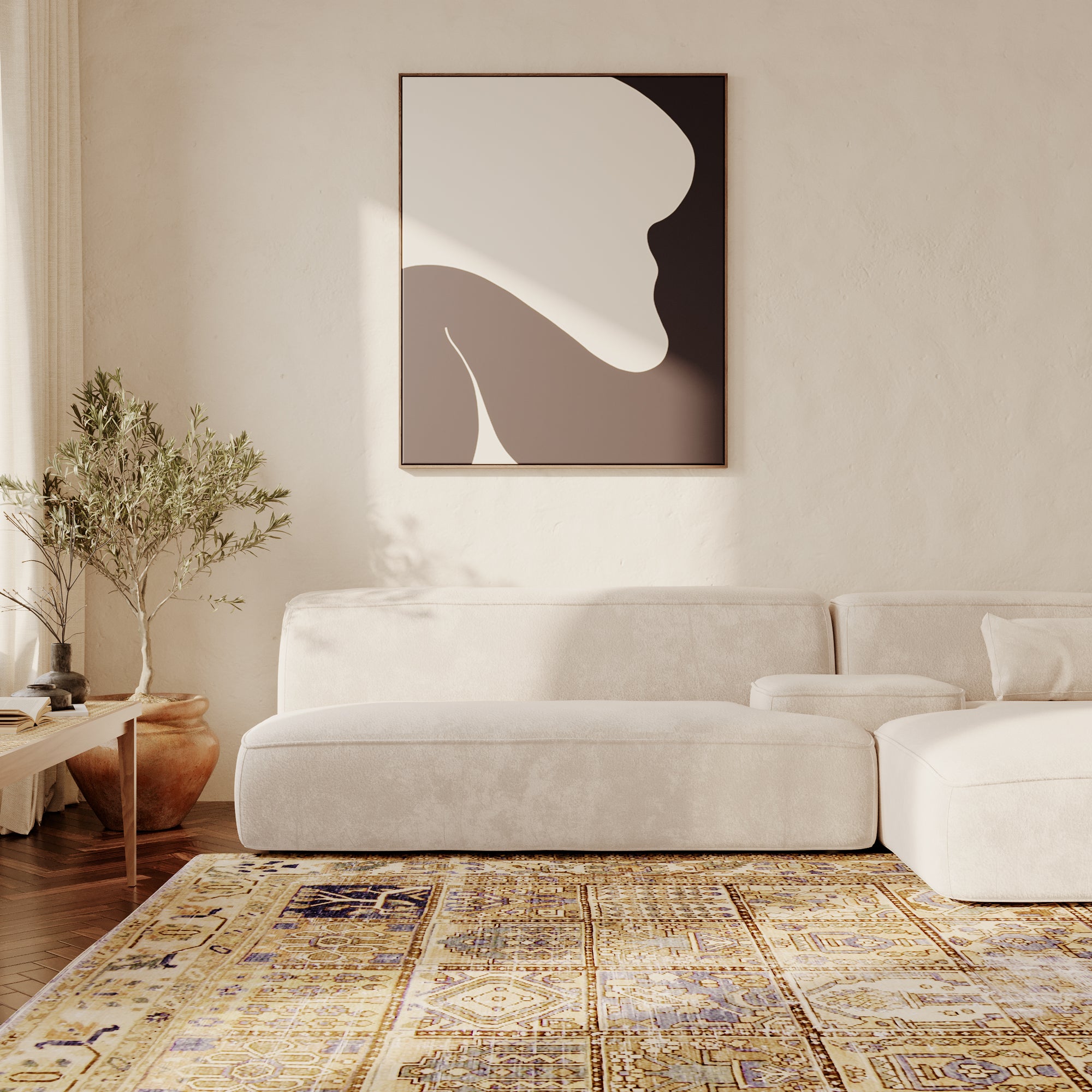Creating a harmonious living space requires striking the right balance between the size and color of carpets and furniture. A well-coordinated room enhances the visual appeal and provides a comfortable and inviting atmosphere. In this blog, we will discuss how to achieve the perfect balance between size and color in carpet and furniture harmony, along with additional tips for incorporating lighting and accessories.
A crucial aspect of living room design is the positioning of the furniture. The placement of furniture should create an attractive arrangement that allows for optimal function. The ideal seating arrangement includes two or three sofas facing each other in an open area with enough space for people to walk through freely.
When choosing furniture, it is important to ensure that they complement each other. The size of each piece should be proportional to one another; large sofas should be accompanied by smaller chairs or ottomans to prevent overcrowding in small spaces. And of course should be carefull about oversized rugs. It is also important to consider height differences between pieces because they will make up part of your overall design scheme when grouped together on one rug or carpeting patterned rug in particular color scheme.

Creating a Cohesive Room Design: Starting with the Right Carpet
When you're designing a room, it's always a good idea to start with the carpet. Choosing the right size and color for your carpet can help set the tone for the rest of your room, making it easier to select complementary furniture pieces.
The first thing to consider is weight. Carpets come in different weights—from light to heavy. Lightweight carpets are great for rooms that are small or have low foot traffic because they're easier to clean and don't trap dirt as easily as heavier ones do. If you have an area rug in your living room, though, you should probably go with a medium-to-heavy weight so it doesn't sink into the floor too much and look strange.
It's also important to consider color when choosing a carpet; dark colors tend to make a room feel smaller while lighter colors make it feel bigger. If you want your space to feel larger than it is (and who doesn't?), opt for light colors like cream or beige instead of darker ones like red or black.
When deciding on which pattern will best complement your space, think about what kind of mood you want.
Selecting the Ideal Carpet Size for a Balanced and Beautiful Room Design
Carpet size is crucial to the design of your space. A large carpet can make a small room feel cramped, while a small carpet in a big room can make the space appear disjointed. As a general rule, ensure that the carpet is big enough to accommodate at least the front legs of the furniture or extends beyond the furniture in the seating area.
When choosing your carpet size, take into account the visual weight and balance of each piece in your space. For example, if you have a very large sofa and small coffee table, you may want to consider getting two smaller carpets instead of one large one.

Think about how much space you want to devote to walking around or sitting on top of your carpet as well. If you have a lot of foot traffic in your living room and dining room areas, then it might be beneficial to have an area rug under each piece of furniture instead of just one large one covering everything.
Choosing the right size of carpet is crucial in creating a balanced look, and it's equally important to choose the right style and color.
In order to create a beautiful design, it's important to think about how each of these elements work together. The size of your carpet should be large enough to accommodate at least the front legs of your furniture or extend beyond them in the seating area. This means that if you have a small table, such as a coffee table or side table, you may need to go with a smaller piece of fabric—or even consider using throw pillows instead!
Creating a Harmonious Space: Coordinating Carpet and Furniture Colors
The coordination of your carpet and furniture colors is key to creating a cohesive space that feels balanced and harmonious.
The first thing you want to do is select a color palette that includes both the carpet and furniture colors, so that the two work together to create visual interest. Consider the following tips when coordinating colors:
If your furniture is bold or brightly colored, choose a neutral or subdued color for the carpet. This will allow it to blend into the background and act as a backdrop for your furniture. It will also help keep the room from feeling too dark or busy if you have a lot of other bright colors going on in there as well.
For neutral-colored furniture, opt for a carpet with a pop of color or an interesting pattern to add character to the room. This creates contrast between your main pieces of furniture and makes sure they stand out from everything else in the room.

Use accent colors in decorative elements such as throw pillows, artwork, or curtains to tie the room together. Accent pieces like these are great ways to break up large expanses of solid color and add interest without taking away from what you're trying to focus on (like your beautiful new rug!).
Unleashing Your Inner Designer: Creating a Visually Captivating Space with Carpet and Furniture Color Coordination
Imagine walking into a room that immediately captures your attention with its harmonious blend of colors, patterns, and textures. Achieving this effect requires a keen eye for color coordination, particularly when it comes to combining the colors of your carpet and furniture.
- Embrace the Power of the Color Palette
Begin by selecting a color palette that encompasses both your carpet and furniture colors. This will serve as your guide for creating a cohesive and visually appealing room. Remember, your carpet should either complement or contrast with your furniture to maintain visual interest.
- Complementing Bold and Bright Furniture
If your furniture boasts bold or brightly colored hues, opt for a neutral or subdued carpet color. This will allow the furniture to take center stage without overwhelming the room. In this scenario, the carpet acts as a subtle backdrop that enhances the overall design without stealing the spotlight.
- Adding a Pop of Color to Neutral Furniture
For rooms with neutral-colored furniture, introduce a carpet with a pop of color or an interesting pattern to add character and depth to the space. This approach breathes life into an otherwise monochromatic room, creating an inviting and vibrant atmosphere.
- Tying the Room Together with Accent Colors
Once you've established the primary colors for your carpet and furniture, it's time to tie the room together using accent colors. Incorporate these hues into decorative elements such as throw pillows, artwork, or curtains. This not only adds visual interest but also helps create a sense of unity and harmony throughout the space.

Color coordination is a powerful tool in interior design, and when done correctly, it can transform your living space into a captivating and cohesive haven. By considering the relationship between your carpet and furniture colors, you can create a room that is both visually appealing and uniquely yours. So go ahead, unleash your inner designer, and watch as your room comes to life!
Harmonious Living Spaces: Balancing Patterns, Textures, and Colors in Your Interior Design
Creating a friendly and inviting atmosphere in your living space starts with understanding how to balance various design elements, such as patterns, textures, and colors. Whether you're arranging furniture around a statement carpet or deciding on the right wall colors, striking the right balance is key to exceptional design.
1. Striking a Balance with Patterns and Textures
When combining patterns and textures in your carpet and furniture, it's essential to strike a balance to avoid overwhelming the space. Consider these tips:
- If your carpet has a bold pattern, opt for solid-colored or subtly patterned furniture.
- For a heavily patterned or textured carpet, choose furniture with clean lines and simple designs.
- Layer different textures to add depth and visual interest to the space, such as combining a plush carpet with a sleek leather sofa.
2. Design Principles: Balancing Colors
Incorporating dominant, secondary, and accent colors in your design creates a sense of balance and harmony. Use dark or darker colors as the foundation, and then build upon them with lighter shades for a well-rounded look.
- Dominant color: This color sets the tone for your space and should be the most prominent color in your design.
- Secondary color: Choose a color that complements the dominant color, adding dimension and interest to the room.
- Accent color: Use a contrasting or bold color to create focal points and add a pop of personality to your design.
3.Creating Visual Weight and Balance
Visual weight plays a significant role in achieving a harmonious design. Distribute visual weight evenly across your space by considering the size, color, and placement of your furniture, table, carpet, and wall surfaces.
- Centers of visual weight: These are areas where the eye is naturally drawn, such as a dining table or a large piece of artwork.
- Fabric and texture: Consider the visual weight of different fabrics and textures when selecting furniture and design elements, such as a table runner or a textured wall.
- Balancing centuries: Mixing and matching design styles from different eras can create a unique and dynamic space, but it's essential to maintain a sense of balance and cohesion.
Creating a welcoming and harmonious living space is all about understanding design principles and striking a balance between colors, patterns, and textures. With these design tips in mind, you'll be well on your way to transforming your home into a beautifully balanced and visually stunning retreat.

Explore and Experiment: Discover the Perfect Furniture Arrangement for Your Space
Achieving exceptional design in your living space requires a sense of balance and harmony between various design elements such as colors, furniture, and surfaces. One way to create this harmony is by experimenting with different furniture arrangements.
Don't be afraid to test different furniture arrangements to find the perfect balance. Move furniture around to see how it interacts with the carpet, wall surfaces, and the overall room layout. You might be surprised by how a new arrangement can transform the space.
As you experiment with different arrangements, pay attention to the centers of interest in the room, such as a dining table or a large piece of artwork. These focal points can help guide your furniture arrangement and create a sense of balance.
Finding the perfect balance in your living space is all about embracing the art of experimentation and incorporating key design principles. By testing different arrangements and considering factors like visual weight and color, you can create a harmonious and inviting space that reflects your unique style and taste. Don't be afraid to think outside the box and let your creativity shine through your exceptional design choices.

Enhancing the Harmony between Carpet and Furniture with Lighting and Accessories
It's important not to overlook the significant role that lighting and accessories play in achieving harmony between carpets and furniture.
Lighting plays a significant role in enhancing the harmony between carpets and furniture. Use a combination of ambient, task, and accent lighting to highlight the room's features, create depth, and set the desired mood. Experiment with different light sources, such as floor lamps, table lamps, and pendant lights, to find the best balance.
Accessories can further enhance the harmony between your carpet and furniture. Choose decorative items such as throw pillows, vases, and artwork that complement or contrast the colors and patterns of your carpet and furniture. When selecting accessories, consider the room's overall style, theme, and color palette to ensure a cohesive look.
Achieving harmony between carpet and furniture can be greatly improved with the use of proper lighting and accessories. By experimenting with lighting options and adding accessories that complement colors and patterns, you'll create a comfortable haven with a more harmonious and inviting living space.

As a result, achieving the perfect balance between size and color in carpet and furniture harmony is essential for creating a cohesive and inviting living space. By following these steps, you can create a beautiful and harmonious room that reflects your personal style and taste:
-
Consider the right carpet size: Taking into account the room size and furniture layout, choose the carpet size that best suits your space.
-
Coordinate colors: Select carpet and furniture colors that either complement or contrast each other to create visual interest.
-
Balance patterns and textures: Achieve harmony between carpet and furniture patterns and textures by playing with bold and simple patterns for a rich look.
-
Experiment with arrangements: Rearrange furniture in different ways to observe the impact on the overall layout and visual weight of the space.
-
Incorporate lighting: Use a combination of ambient, task, and accent lighting to highlight the room's features, create depth, and set the desired mood.
-
Add accessories: Choose decorative items such as throw pillows, vases, and wall art to further enhance the harmony of colors and patterns.
-
Select accessories and other design elements with the room's style, theme, and color palette in mind for a cohesive look.
By implementing these strategies, you'll not only make your living space aesthetically appealing but also create a comfortable and peaceful environment, making your home a true sanctuary.

